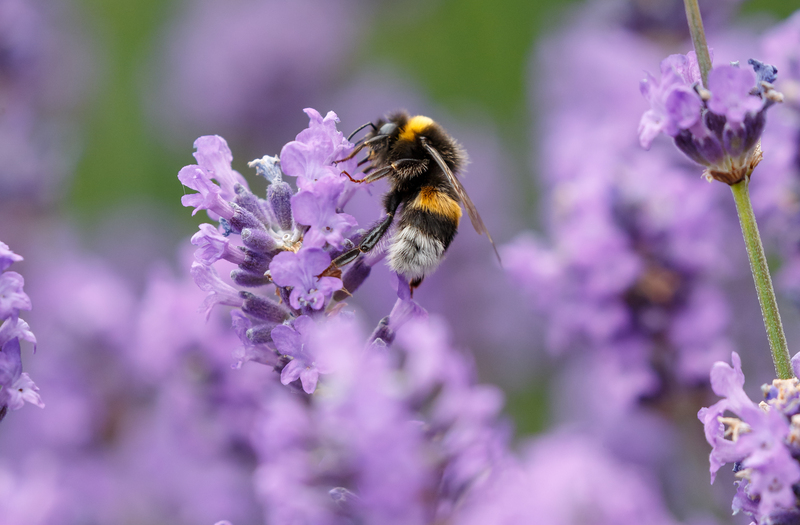Harnessing Waste to Nourish Soil
Posted on 20/09/2025

Harnessing Waste to Nourish Soil: Optimizing Nature's Cycle
In a rapidly industrializing world, waste generation is an inevitable by-product of human activity. Yet, by harnessing waste to nourish soil, communities and individuals can not only reduce landfill overflow but also regenerate the earth's fertility, support sustainable agriculture, and contribute positively to the environment. This comprehensive guide explores innovative, effective, and sustainable ways to transform organic and agricultural wastes into valuable soil nutrients.

Table of Contents
- Why Nourish Soil with Waste?
- Types of Waste Used for Soil Enrichment
- Benefits of Harnessing Organic Waste
- Methods for Converting Waste into Soil Nutrients
- Case Studies: Waste-to-Soil Success Stories
- Common Challenges and Practical Solutions
- The Future of Waste-Based Soil Enrichment
- Conclusion: A Greener Path Forward
Why Nourish Soil with Waste?
Traditional soil management relies heavily on synthetic fertilizers, which, though effective in the short term, can lead to soil degradation, water contamination, and long-term challenges for farmers and the food system. Harnessing waste to nourish soil presents a nature-inspired, circular alternative. By returning decomposed organic matter to the earth, we mimic the ecological processes that have sustained fertile landscapes for millennia.
Organic waste management shifts the paradigm from "waste disposal" to "resource recovery." Rather than discarding valuable nutrients, we can unlock their potential--improving soil fertility, structure, and health for generations.
Environmental Motives for Harnessing Waste
- Reduces landfill usage and associated methane emissions
- Minimizes reliance on fossil-fuel based fertilizers
- Combats soil degradation and desertification
- Supports carbon sequestration and climate resilience
Types of Waste Used for Soil Enrichment
Not all waste is suitable for direct application to soil--some require processing, while others bring unique nutritional or structural benefits. Here are common types of organic and agricultural wastes used to fertilize the soil naturally:
1. Food Waste
- Fruit and vegetable peels
- Coffee grounds
- Bread, pasta, and grains (in moderation)
- Eggshells
2. Garden and Yard Debris
- Grass clippings and leaves
- Pruned branches (shredded/chipped)
- Weeds (before they seed)
3. Agricultural By-products
- Crop residues (stalks, husks, shells)
- Manure from herbivores (e.g., cows, rabbits, horses)
- Spent mushroom substrate
4. Industrial Organic Wastes
- Papermill sludge (untreated, wood-derived only)
- Food processing residues (pulp, peels, seeds)
Note: Non-organic and contaminated waste (plastics, metals, synthetics) should never be added to soil. Always follow best practices for safety when handling agricultural or large-scale industrial residues.
The Multifaceted Benefits of Harnessing Waste
Using waste-based soil amendments can be transformative, not just for crop yields but for holistic environmental and community wellness. Here's how:
- Improves Soil Structure: Adds organic matter, enabling soil to better retain water and nutrients.
- Promotes Biodiversity: Encourages earthworm activity and fosters beneficial soil microbes.
- Boosts Crop Nutrition: Slowly releases essential elements (N, P, K, trace minerals) over time.
- Mitigates Erosion: Enhanced structural stability helps soil resist wind and water erosion.
- Reduces Pollution: Minimizes the leaching of fertilizers and pesticides into watersheds.
- Increases Farm Profitability: Cuts the cost of commercial fertilizers, leading to sustainable savings.
Additional Benefits
- Mitigates greenhouse gas emissions through diverting waste from landfills
- Reduces urban waste management costs
- Empowers local food systems with closed-loop nutrient cycles
Methods for Converting Waste into Soil Nutrients
How does one effectively convert waste into a form that can nourish and revitalize the soil? Several innovative yet accessible methods are widely practiced across homes, farms, and even at industrial scale.
1. Composting: Nature's Recycling Process
Composting is the controlled aerobic decomposition of organic matter. This method, done in backyards, community gardens, or municipal facilities, produces humus-rich compost that feeds the soil ecosystem.
- How-To: Layer nitrogen-rich "greens" (food scraps, grass) with carbon-rich "browns" (leaves, cardboard). Maintain moisture and aerate regularly.
- Benefits: Balances nutrients, suppresses plant disease, and improves soil pH.
- Compost can be used as a top dressing, mulch, or potting mix ingredient.
2. Vermicomposting: Power of Worms
Harness the digestive power of red wiggler worms to break down kitchen scraps into worm castings--one of the best organic fertilizers available.
- Ideal for: Apartments, urban homes, schools
- Produces: Rich, microbe-laden castings and worm "tea" for liquid fertilizing
3. Anaerobic Digestion
Used at municipal or agricultural scale, anaerobic digesters process manure and food waste in oxygen-free tanks, producing two valuable products:
- Biogas (for energy)
- Digestate slurry (can be separated, dried, and applied as soil amendment)
This method is highly effective for processing large volumes and is often combined with renewable energy generation.
4. Black Soldier Fly (BSF) Bioconversion
BSF larvae consume food residues at high rates, converting waste into rich compost and high-protein biomass for animal feed. The frass (insect manure) is an outstanding soil amendment.
5. Direct Mulching and Sheet Composting
- Mulch directly: Apply chipped branches, straw, or leaves around plants to suppress weeds and gradually nourish soil.
- Sheet composting: Lay alternating layers of "green" and "brown" waste directly on soil; let nature break it down over several months.
6. Biochar Enrichment
Biochar is charcoal produced from organic waste in the absence of oxygen. When applied to soil, it boosts nutrient retention, enhances microbial activity, and sequesters carbon for centuries.
In summary: There's no one-size-fits-all recipe. Each method can be scaled, adapted, or combined depending on climate, available waste streams, and soil needs.
Case Studies: Waste to Soil Success Stories
Urban Community Composting in New York City
Through grassroots efforts, city neighborhoods collect food scraps, converting them into compost distributed to local parks and gardens. This initiative reduced landfill input by thousands of tons annually and improved green spaces' resilience and productivity.
Rice Husk Utilization in Southeast Asia
Farmers in Vietnam and Thailand convert abundant rice husks into biochar or compost, drastically slashing field-burning emissions and enhancing rice paddy fertility--leading to both ecological and economic gains.
Zero-Waste Wineries in California
By composting grape pomace and stems, some wineries create organic soil amendments returned to their vineyards, boosting grape quality and closing the loop on agricultural waste.
Common Challenges & Practical Solutions
Despite the clear advantages, harnessing waste to revitalize soil presents obstacles that require innovative approaches:
- Odor and pests: Solution: Cover compost with carbon-rich materials, maintain aeration, and avoid adding meat or dairy wastes.
- Contamination risk: Only compost certified organics; avoid adding treated wood, synthetic chemicals, or pet waste.
- Slow decomposition: Shred large items, maintain moisture, and monitor temperature for efficient breakdown.
- Labor intensity: Community-scale composting co-ops and municipal pickup can distribute workload and increase impact.
- Lack of awareness or training: Promote workshops, school programs, and online guides for hands-on learning.
The Future of Waste-Based Soil Enrichment
Advanced circular economy initiatives are creating smart, large-scale systems for closing nutrient loops within urban and rural food networks.
- Smart waste collection: Sensor-driven bins, route optimization, and community incentives for sorting organics
- Industrial-scale composting: Large municipal and regional composting for schools, restaurants, and markets
- Innovative biotechnologies: Harnessing fungi, microbes, and insects for unprecedented rates of organic conversion
- Agroecological integration: Farms combine waste-to-soil practices with traditional crop-livestock systems for resilient, diversified production
The shift towards sustainable waste transformation isn't just a hopeful vision--it's a burgeoning reality driven by necessity and innovation.
Conclusion: Cultivating a Green Future Through Waste
Harnessing waste to nourish soil is one of the most effective and accessible tools we have to rebuild earth's fertility, tackle climate change, and secure food systems for future generations. Whether on a home, community, or agricultural scale, this practice underpins a truly sustainable society--where what was once "waste" becomes the foundation of new life.
By adopting natural nutrient recycling, we not only divert valuable resources from landfills but also help balance our ecosystems, save money, and promote wellbeing for people and the planet alike.
Let's make soil enrichment from waste a central part of our daily lives and urban infrastructure--for the health of our gardens, our food, and our shared earth.
Ready to Start?
- Begin home composting--and involve your family in the process.
- Support or join community composting initiatives.
- Educate yourself and neighbors about safe, effective nutrient recycling.
- Advocate for municipal organic waste recovery programs in your city.
Together, we can create fertile, vibrant soils by unlocking the potential in our waste streams--because every banana peel, coffee ground, and leaf really can make a difference!

